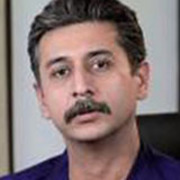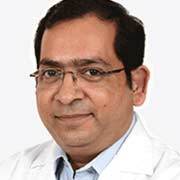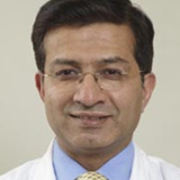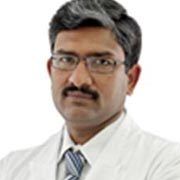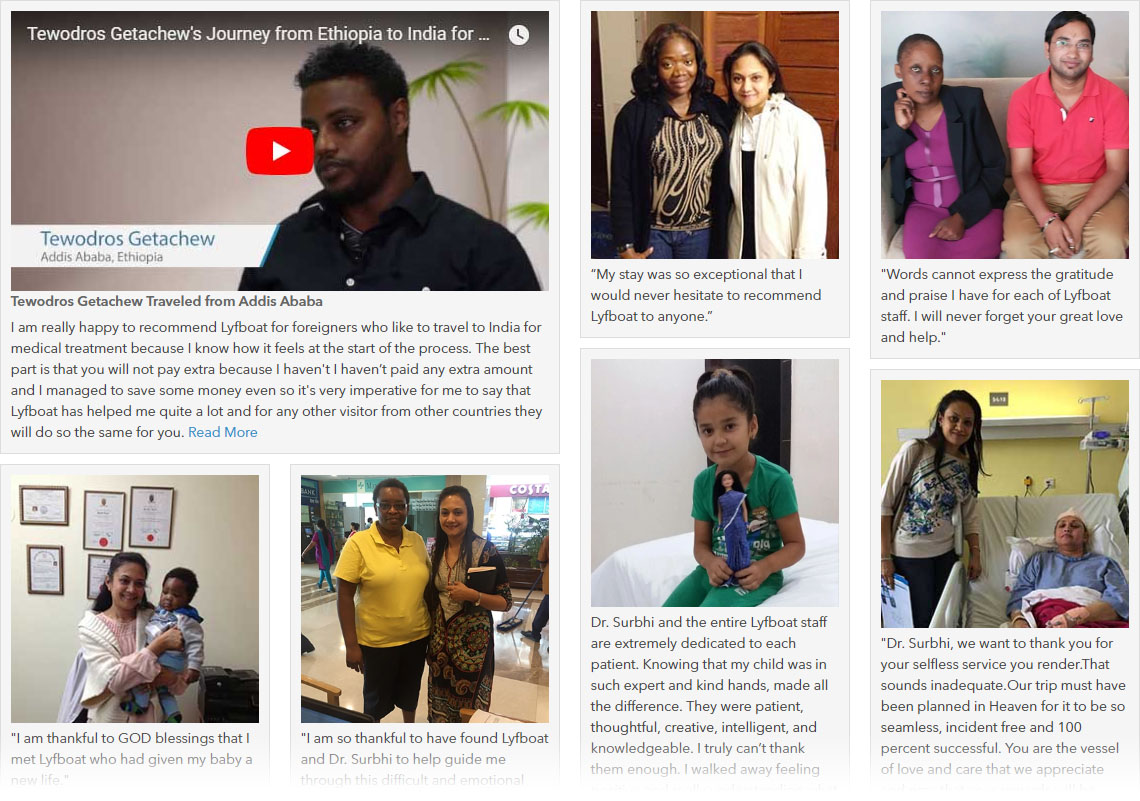- Bariatric Surgery
- Cardiology
- Transplants
- Neurology
- Oncology
- Bladder Cancer Treatment
- Bone Cancer Treatment
- Breast Cancer Treatment
- Colon Cancer Treatment
- Esophagus Cancer Treatment
- Kidney Cancer Treatment
- Leukemia Treatment
- Liver Cancer Treatment
- Lymphoma Treatment
- Lung Cancer Treatment
- Myeloma Treatment
- Prostate Cancer Treatment
- Pancreatic Cancer Treatment
- Ovarian Cancer Treatment
- Testicular Cancer Treatment
- Orthopedics
Deep Brain Stimulation Cost in India
How much does Deep Brain Stimulation Cost in India?
The cost of Deep Brain Stimulation in India starts from USD 25000 (INR 18,57,000), it varies with choice of hospital and the city. The deep brain stimulation treatment costs around $70000 in the US and around $60000 in the UK, which is way more than what it costs in India.
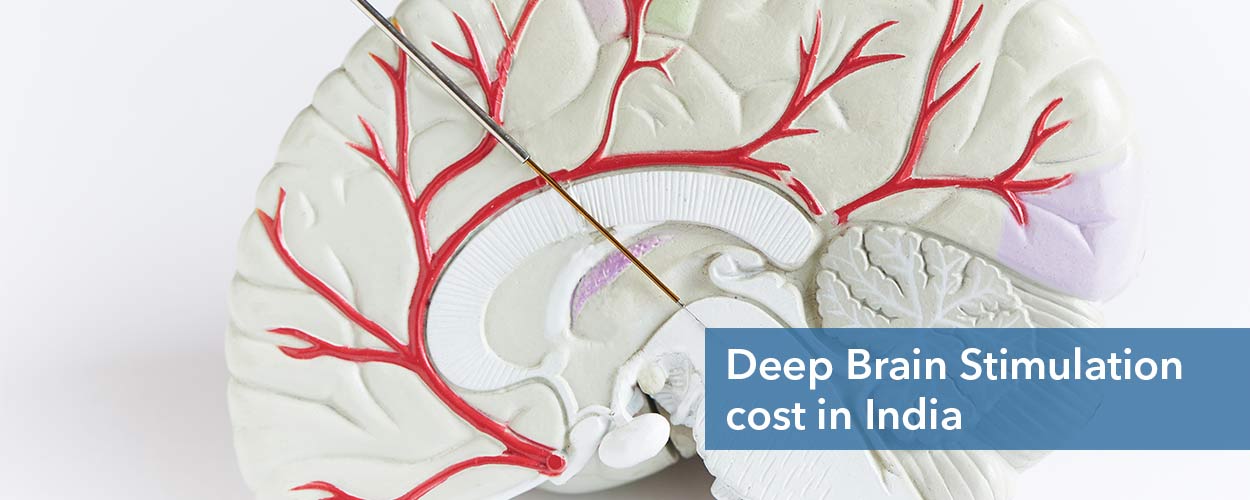
Factors affecting the Cost of Deep Brain Stimulation in India
Some of these factors include:
- The high quality of medical treatments
- Quick availability of treatments
- Guidance of highly experienced and trained surgeons and doctors
- Availability of all diagnostic and medical facilities under one roof
- Use of high end, modern and latest technology
Get a Free Personalized quote for Deep Brain Stimulation surgery in India
Trusted by Patients from 90+ countries
- Connect with 1000+ Specialists
Use the built in communication tools to ask as many questions as needed and get a prompt response. Patient Coordinators will assist you from start to finish.
- Connect with Hospitals around the globe
We hand pick each hospital & only internationally accredited hospitals are included to ensure you will receive high quality care.
- Unbeatable Quotes - Guaranteed
If you receive a lower quote for the same treatment, hospital and doctor, we guarantee we will beat that price.
- Free Medical Advice from Experts
Speak directly to doctors to have all your questions and concerns addressed before finalizing where to get your treatment.
What is deep brain stimulation?
Deep brain stimulation is a Food and Drug Administration (FDA) approved therapy for the treatment of certain movement and neurologic disorders including:
- Parkinson’s disease
- Essential tremor
- Dystonia
- Epilepsy
- Obsessive-compulsive disorder
DBS therapy is a surgical procedure used to control the symptoms of certain neurological disorders, especially Parkinson’s disease. Some of the Parkinson’s disease symptoms that are relieved with the help of deep brain stimulation therapy include tremors, walking problems, rigidity, slowed movement and stiffness.
Deep Brain Stimulation is classified under neurostimulation-based treatment which can also help control symptoms of conditions such as refractory epilepsy, chronic pain (central pain syndrome), obsessive-compulsive disorder (OCD), Tourette’s syndrome, and some major depression-related disorders.
It received FDA approval in 2009, under its humanitarian device exemption, for use in cases of treatment-resistant OCD.
Deep brain stimulation is being studied deeply for its potential use and benefits in the following conditions:
- Multiple sclerosis
- Alzheimer’s disease
- Addiction to cocaine or other substances
- Anorexia nervosa
- Traumatic brain injury
- Stroke recovery
- Thalamic pain syndrome
The major advantage of DBS surgery is that it does not cause damage to the brain tissue, like, other procedures such as pallidotomy or thalamotomy. And the DBS procedure can be reversed.
DBS has been found to be effective in reducing dyskinesias, the uncontrolled wiggling motions resulting from the use of high doses of medication. DBS surgery is not a permanent cure, but it helps to provide relief from the symptoms and reduce their severity so that medication doses can be lowered for better management of the underlying condition.
How does Deep Brain Stimulation work?
DBS surgery is conducted to implant a small electrical device called a neurotransmitter around the chest region of the patient suffering from tremors, stiffness, rigidity and other neurological symptoms. The neurotransmitter is always kept on by the patient after the surgery.
The neurotransmitter helps patients send electrical signals to specific areas of the brain. These areas of the brain are where the surgeons have placed the other end of the electrical leads that help deliver electrical impulses.
Sending electrical impulses to these identified regions of the brain helps patients control the electrical activity of the brain that leads to specific neurological disorder symptoms. Specific areas of the brain are responsible for producing different symptoms such as tremors and rigidity. Depending on the symptoms experienced by the patient, specific areas of the brain are targeted.
The electrical signals sent by the neurotransmitter help block the nerve signals sent by the brain that lead to PD symptoms, in addition to others.
A Deep Brain Stimulation device consists of three parts that are implanted inside the body:
Neurostimulator: This is a battery-powered pacemaker device that is programmable by a special control remote. It induces electric pulses. The device is placed under the skin of the chest, near the collarbone, or in the abdomen.
Lead: This is a coated wire with a number of contacts or electrodes at the tip. These are placed inside the brain and connected to another wire (extension wire) through the small holes in the skull. The wire delivers the electric pulses generated by the stimulator device to the specific part of the brain.
Extension: This is an insulated wire that is placed under the skin and connects the lead wire to the neurostimulator device. It runs from the head, behind the ear and down the neck to the chest.
Hand-held programmer device: This device remains outside the body and is used to adjust the device’s electric stimulation. It can turn the pulse generator device off and on.
How can Lyfboat assist you getting Deep Brain Stimulation in India?
World's Most Trusted Medical Advisory & Discount Platform
Lyfboat is a free advisory platform; we do not charge any fees from patients. In fact, we negotiate the price that Indian hospitals offer. In some cases we are able to reduce the cost by negotiating upto 20% of what Hospitals generally offer. We advise the best treatment from the top hospital/surgeon at best price.
What can I expect before the deep brain stimulation surgery?
Prior to surgery, patients have to undergo certain medical evaluations, including:
- Blood and urine tests: to identify toxins and abnormalities
- MRI and/or CT Scans: to help doctors identify and target the right area of the brain causing symptoms.
General instructions before the surgery:
- Stop taking non-steroidal anti-inflammatory medicines (NSAIDs) about one week before the surgery.
- Stop smoking or chewing tobacco, and drink alcohol about a week prior to the surgery. This is to be followed for 2 weeks after the surgery as they increase the risk of bleeding problems.
- Get clearance from the cardiologist or primary care physician to ensure you don’t have a history of other medical or heart conditions that may increase surgery risks.
- You should not have food or drink, including the medication for Parkinson’s or other conditions, after midnight before the surgery.
How deep brain stimulation surgery is performed in India?
DBS surgery can be performed while you are awake (with local anesthesia and mild sedation) or asleep (local anesthesia). Some people may remain awake for a part of surgery and asleep during the other part.
If the surgery is performed while the patient is awake, local anesthesia is used to numb the scalp and no anesthesia is required for the brain as it does not have any pain receptors.
The doctors may ask the patient to stop taking the medicines that control Parkinson’s symptoms. During the procedure, the patient is asked to perform certain tasks to help guide the surgeon while placing electrodes in the accurate part of the brain.
However, remaining awake during brain surgery or not taking medicine can be unsettling for some people. So using general anesthesia is an alternative option as the patient will be unconscious during the surgery.
Following are the steps involved in a Deep Brain Stimulation Surgery in India:
1. Attaching the stereotactic frame
The surgeon first attaches a stereotactic frame to the head of the patient. Local anesthesia is applied on the scalp where the four pin sites will be inserted to minimize discomfort. The might patient might feel some pressure as the pins are tightened.
2. Imaging scans – MRI or CT scan
The doctor will take imaging scans such as computerized tomography (CT) or magnetic resonance imaging (MRI). These images and special computer software are used to map the brain and identify the area for placement of the electrodes.
3. Incision on skin and skull
After the imaging scans, the patient will be taken to the operating room. The stereotactic head frame remains secured and it prevents any movement of the head while placing the electrodes. The patient may remain awake during this part of the surgery. The doctor may give a mild sedative to make it more comfortable during the skin incision. Later, the sedation is stopped so that the doctors can talk to the patient and perform the tasks.
The hair is shaved and an incision is made on the skin on the top of the head to expose the skull. The surgeon will then make two burr holes using a drill on the left and right sides of the skull. Through these holes, electrodes are passed into the brain.
4. Insertion of the electrode in the brain
The electrodes are inserted through the small burr holes in the skull and placed in the brain. Using the images from the MRI / CT scans and the planning software, the electrode is inserted into the brain at a precise depth and angle. There will be no discomfort as the brain itself does not feel any pain.
The surgeon may implant one lead wire into each side of the brain. The wire will run under the skin, reaching a pulse generator (neurostimulator) that is implanted near the collarbone.
5. Stimulation of the brain cells
Once the permanent DBS electrode/lead is placed on the correct nerve, test stimulation will be performed. The surgery team will ask if the patient feels any of their symptoms have lessened or completely gone away.
6. Closure of the incision
The surgeon will place a plastic cap over the small hole on the head to hold the lead in place. The incision of the scalp is closed with sutures or staples. Later a bandage is placed on the surgical wounds.
After a week later, outpatient surgery is performed to implant the stimulator in the chest. This is performed under general anesthesia and the patient will remain unconscious during the procedure.
Implanting the stimulator
In the operation theatre, the surgeon will reopen a portion of the incision on the scalp to access the leads. Then a small incision is made near the collarbone where the neurostimulator will be implanted under the skin. The electrode/lead is attached to the extension wire that is passed under the skin down the neck to connect to the stimulator/battery in the chest.
The stimulator might be visible as a small bulge under the skin, but it usually remains hidden under the clothes.
It is advisable to avoid movement of the arm over the shoulder or excessive stretching of the neck as the incision heals.
Programming the stimulator
About a few days after the surgery, the patient will have their stimulator programmed in a follow-up visit. The doctor programs the pulse generator in his clinic using a special remote control. It may take some time to find 3 to 4 programming sessions to find the optimal setting. The amount of stimulation required is customized depending on the person’s condition. Once the simulator is programmed, the medication dosage will be adjusted.
How is recovery after deep brain stimulation treatment?
DBS is a risky and a lengthy procedure that requires proper aftercare and follows up a visit to the neurosurgeon to check on the progress and recovery. The stimulation is regularly adjusted by the neurosurgeon during the follow-up visit, depending on the needs of the patient and any improvement in their condition.
The pulse generator attached during the surgery is completely adjustable through programming and can be varied according to the needs of the patient. This can help reduce the severity of symptoms as per individual needs, but the only drawback is that the patient is required to make a visit to the doctor on a regular basis.
Pulse generator battery last for over a period of three to five years and this is when it must be replaced. The DBS battery replacement procedure is performed as outpatient. An incision is made near the placement of the pulse generator (mostly chest or abdomen) and the battery is replaced.
The neurosurgeon also adjusts the medications of the patients after the DBS surgery, the dosage of medications is likely to be reduced after DBS treatment.
Outlook and Life with a stimulator
DBS has proved to be a remarkably safe and effective treatment for the conditions in properly selected patients. Although it does not cure the underlying condition, DBS provides symptomatic relief and significantly improves the quality of life in most patients. Promising results have been seen for the conditions DBS is still being investigated for.
Once the stimulation system is programmed, the patient is sent home with instructions on how to use the handheld device to adjust the stimulation themselves. The handheld controller can turn the stimulator on and off, adjust the stimulation strength, and select appropriate programs.
Mostly, patients are asked to keep their DBS system turned on all day and night. But in some cases, especially with essential tremors, it might be used during the day only and turned off before sleeping. The doctor will make adjustments in the settings to improve the stimulation if required.
The DBS system can have either a primary cell battery or a rechargeable unit. The surgeon will discuss the pros and cons prior to surgery and help you choose the suitable type. If the DBS system has a rechargeable battery, a charging unit can be used. Usually, the charging time of 1 to 2 hours per week is enough.
It is important to keep in mind that electronic devices such as cellular phones, microwaves, pagers, security doors, anti-theft sensors and household appliances will not affect the stimulator. However, one should carry the Implanted Device Identification card when traveling by air as the device is detected at airport security gates.
What are the risks and complications of deep brain stimulation?
Some of the common DBS complications and risks include the following:
- Stroke
- Bleeding
- Infection
- Seizures
- Nausea
- Problems related to the heart
- Breathing problems
- A headache and confusion
- Temporary pain
- Hardware malfunction
Stimulation of the neurotransmitter may also lead to certain side effects in some patients. Some of the DBS side effects include the following:
- Lightheadedness
- Problem balancing
- Spleen problems
- Numbness
- Muscular discomfort such as tightness
- Tingling sensation
- Mood swings
- Depression
Why prefer India for deep brain stimulation surgery?
Deep brain stimulation in India is available at all major hospitals located across different cities. Many patients visit India to undergo a DBS procedure, which is a sensitive surgical intervention involving the placement of an electrical device.
Certain hospitals in India, such as Apollo Hospital, New Delhi, have been there in the field of deep brain stimulation therapy for decades now. These hospitals are equipped with the latest technology used for the treatment of neurological disorders, including Parkinson’s disease and Alzheimer’s disease.
The best Indian deep brain stimulation hospitals are located at the entire perimeter of the country, especially in all the major cities that are well connected through air, rail and road transport. This is the reason why patients from abroad can easily access treatment in the best neurology hospitals in India.
Since DBS is a lengthy and a sensitive procedure, the hospitals also possess the facilities to make patient recover from the procedure after the surgery. The hospitals are equipped with the in-house facilities to make the patients comfortable and relax after the surgery.

Max Super Specialty Hospital
Saket, New Delhi, India
Max Super Specialty Hospital
Saket, New Delhi, India
The top deep brain stimulation hospitals are equipped with all the latest technology used to implant the stimulator and connect it to the wires that transmit the electrical signals to the brain.
The neurology and neurosurgery department in these Indian hospitals is run by highly experienced doctors, neurosurgery and neurology specialists, who are educated and trained from abroad.
They hold the expertise and the experience that it requires to handle simplest to complex neurological conditions and are experienced with the techniques used to manage the symptoms and the condition.
Six Simple Steps
Our medical advisory platform automatically sends your medical query to our network of expert Doctors, working only at top internationally accredited Hospitals.
You and the medical providers communicate directly via email or your online patient account; our case managers are always available to help you with this.
You receive medical opinions and cost quotation within 24 to 48 hours via email and your online patient account.
Lyfboat empowers you to compare the medical opinions, and discuss the options with our very own doctors who help answer your questions, and guide you in making informed decisions on the best treatment option.
We negotiate your final costs, explore available discount offers, and we handle all your logistics including travel, accommodation, transport, and medical co-ordination.
Get cured, pay hospital after treatment and return home safe. Our care team is available throughout your journey to good health!
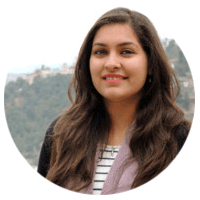
Written By Vanshika Rawat
Vanshika Rawat is an experienced content developer. She is very knowledgeable in the field of science and healthcare and has worked under brilliant scientists during her higher education. Vanshika obtained her degrees in Masters in Science and Bachelors in Science (Microbiology with Hons.) from renowned institutions - Panjab University and University of Delhi.
Verified By Dr. Surbhi Suden
Dr. Surbhi Suden is one of the founders of Lyfboat and a doctor with a renowned name in the Medical tourism industry. She has been working with international patients since 2008 and is a deeply committed professional with a long term vision of transforming the current healthcare scenarios.Cost Calculator

Top Specialities
- Best Doctors in India
- Best Bariatric Surgeons in India
- Best Bone Marrow Transplant Doctor in India
- Best Cardiologist in India
- Best ENT Doctor in India
- Best Epilepsy Doctors in India
- Best Gastroenterologist in India
- Best Hair Transplant Surgeon in India
- Best Hematologist in India
- Best Hip Replacement Surgeon in India
- Best Infertility Doctor in India
- Best Knee Replacement Surgeon in India
- Best Liver Transplant Surgeon in India
- Best Nephrologist in India
- Best Neurologist in India
- Best Neurosurgeon in India
- Best Oncologist in India
- Best Orthopedic Doctor in india
- Best Ophthalmologist in India
- Best Penile Implant Surgeon in India
- Best Penile Enlargement Doctor in India
- Best Plastic Surgeon in India
- Best Pulmonologist in India
- Best Rhinoplasty Surgeon in India
- Best Rhinoplasty Surgeon in Turkey
- Best Spine Surgeon in India
- Best Urologist in India
- Best Cardiologists in the World
Top Treatments
- Bone Marrow Transplant Cost in Turkey
- Gastric Band Cost Turkey
- Cochlear Implant Surgery Cost in India
- Cancer Treatment Cost in India
- Erectile Dysfunction Treatment Cost in India
- Hair Transplant Cost in India
- Laser Eye Surgery Cost in India
- Penile Implant Surgery Cost in India
- Penis Enlargement Surgery Cost in India
- Spine Surgery Cost In India
- 5000 Grafts Hair Transplant Cost Turkey
- Gastric Sleeve Surgery in Turkey
- Turkey Hair Transplant Package
- Liver Transplant in Turkey
- Penis Enlargement in Turkey
- Kidney Transplant Cost in Turkey
- Knee Replacement in Turkey
- IVF Cost in Turkey
- Proton Beam Therapy Cost in India
- LVAD Cost in India
- Pediatric Liver Transplant Cost in India
- Limb Lengthening Surgery Cost in Turkey
- 5000 Grafts Hair Transplant Cost Turkey
- 5000 Grafts Hair Transplant Cost
- Liver Transplant Success Rate in India
- Liver Cancer Treatment Cost
- Pancreatic Cancer Treatment Cost
- Prostate Cancer Treatment Cost
Best Hospitals for Top Treatments
- Best Blood Cancer Hospital in India
- Best Bone Cancer Hospital in India
- Best Bone Marrow Transplant Hospitals in India
- Best Breast Cancer Hospital in India
- Best Cancer Hospitals in India
- Best Hospital for Brain Tumor in India
- Best Hip Replacement Hospital in India
- Best Heart Hospital in India
- Best Kidney Transplant Hospital in India
- Best Knee Replacement Hospital in India
- Best Liver Cancer Hospital in India
- Best Liver Transplant Hospital in India
- Best Lung Cancer Hospital in India
- Best Neurology Hospital in India
- Best Orthopedic Hospital in India
- Best Spine Hospitals in India
- Best IVF Centre in India
- Best IVF Clinics in Turkey
- Best Hair Transplant Clinic in Turkey
- Best Prostate Cancer Hospital in India
- Best Hospital for Cyberknife Treatment in India
- Best Urology Hospital in India
- Best Hospitals for Pancreatic Cancer Treatment in India
- Best ENT Hospital in India
- Best Kidney Transplant Hospitals in Turkey
- Best Hematology Hospital in India
- Best Lymphoma Treatment Hospitals in India
Latest Articles
- Best Countries for Plastic Surgery
- Best Countries for IVF
- Best Countries for Hair Transplant
- Blood Cancer Treatment Cost
- Brain Tumor Surgery Cost
- Robotic Heart Surgery Cost
- Knee Replacement Surgery Cost
- Penis Enlargement Surgery Cost
- Penile Implant Surgery Cost
- Liver Transplant Cost
- Gastric Band Abroad
- Tummy Tuck Abroad
- Gamma Knife Surgery Cost
- Spinal Fusion Surgery Cost
- Gastric Sleeve Abroad
- Gastric Bypass Abroad
- Scoliosis Surgery Cost
- Heart Valve Replacement Surgery Cost
- Life Expectancy After Kidney Transplant
- Best Country for Rhinoplasty
- Bone Marrow Transplant Success Rate
- Bone Marrow Transplant Cost
- Best Countries for Breast Augmentation
- Heart Bypass Surgery Cost
- Best Country for Cancer Treatment
- Hip Replacement Surgery Cost
- Kidney Transplant Cost
- Breast Cancer Treatment Cost
Disclaimer: Lyfboat does not provide professional medical opinion on the treatment or diagnosis of a particular ailment. All the offered services and information presented on www.lyfboat.com are only for the purpose of public knowledge and cannot substitute the professional consultation of the physician. Lyfboat strongly advice against copying or cloning of its web content and follows the legal protocols for protection of its intellectual property.
© 2024 Lyfboat Technologies Pvt. Ltd. All Rights Reserved.
Please wait




